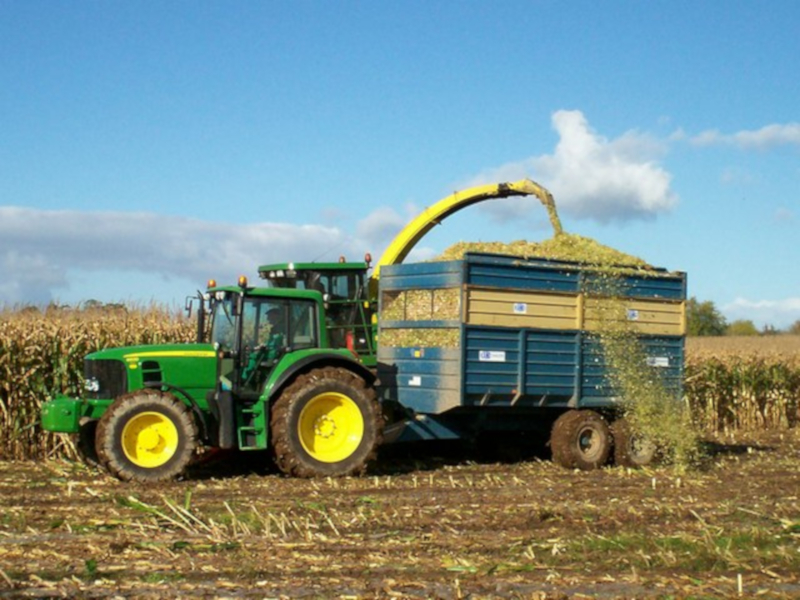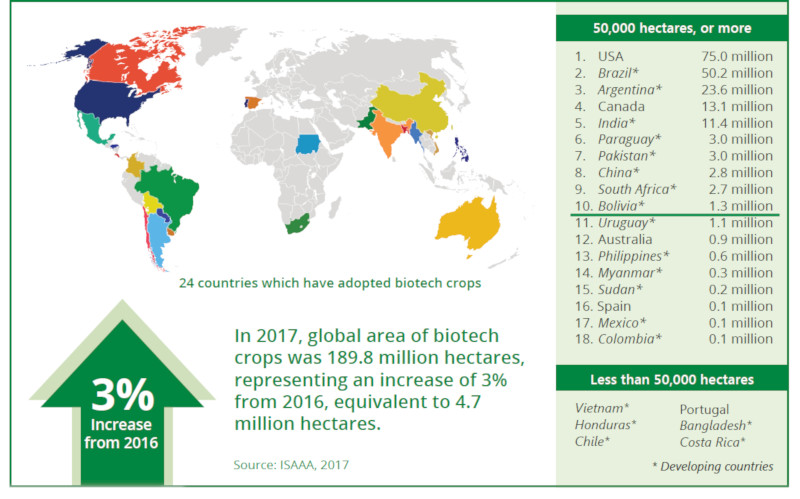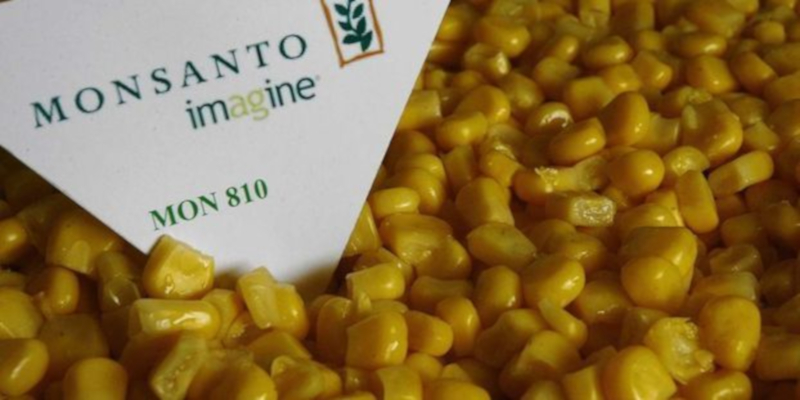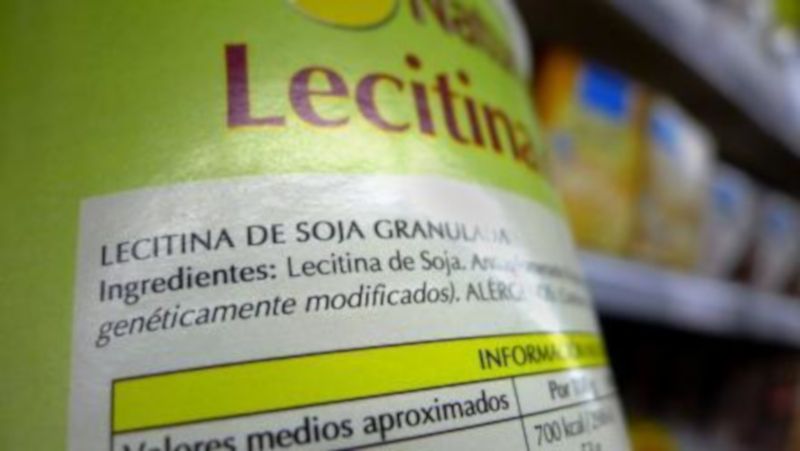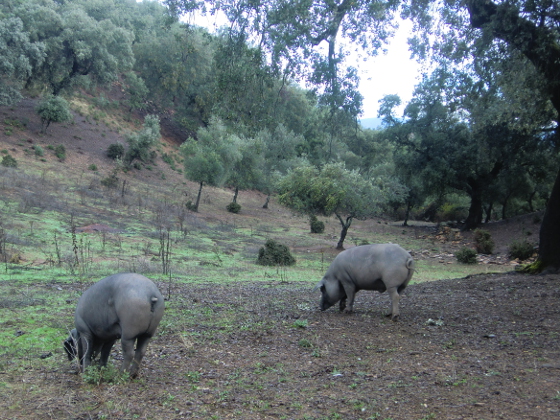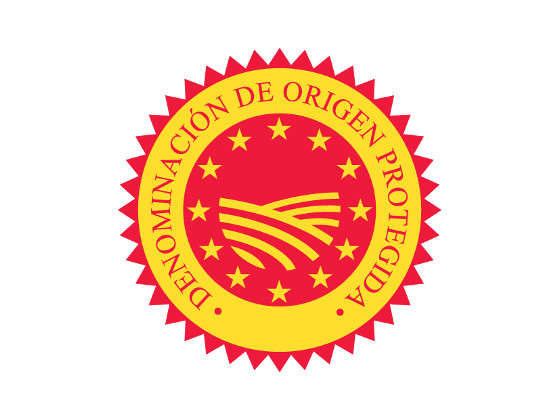A genetically modified organism (GMO) is a plant, animal, or any other type of organism whose genetic makeup has been altered in a laboratory setting. Common GM plants include cotton, canola, corn, soy, and sugar beets whose genes have been altered to make them resistant to disease, pests, or environmental conditions such as drought.
As of 2017, 24 countries across the world cultivated GMOs. But only two countries in Europe have biotech crops spanning only 0.1 million hectares, compared with 72.9 million in the USA.
For the first time in the history of GMO adoption in the EU, in 2017 only two countries planted genetically modified maize: Spain and Portugal. The slight decline in GMO adoption over the years in Europe is due to poor crop margins, and the EU-wide move to eliminate biotech ingredients to avoid including the phrase “Contain GMOs” on the labeling.
The graph below shows the evolution of GMOs in Europe from 2006 to 2016 and shows Spain to be the clear leader in GMO cultivation.
There is a legal framework that has been established by the European Union (EU) to ensure all development of modern biotechnology takes place in safe conditions - including GMOs. It aims to not only protect human and animal health, and the environment but also govern clear labeling and traceability of GMOs on the market.
As part of the framework, GMO corporations have to go through a mandatory application process, where they request to either cultivate or market food or feed within the EU. These applications are made up of a dossier with experimental data and a risk assessment which then goes through a complex and formal decision-making process.
But the approvals process doesn’t stop there. There is a further directive that gives member states the right to prohibit or restrict the cultivation of the crop in their territory for reasons such as environmental or agricultural policy objectives, or land use. So even if the crop is approved at an EU level, the individual country has the right to veto the cultivation of the GMO.
Currently, there is only one GMO cultivated in Spain – MON810 maize also known as Bt corn. It has been genetically modified to combat crop loss due to insects and is approved for use around the world from Argentina to Australia, and the US to Japan.
It was approved by the European Union (EU) in 1998 and in 2018 there were 115,000 hectares of MON810 in Spain and the adoption is limited to areas where the target pest, European corn borer, wreaks havoc (Catalonia, Aragon, and Extremadura). However, four regions in Spain (Galicia, Asturias, Basque Country, and Canary Islands) have declared themselves GMO-free, which shows that support for GMOs is not country-wide.
The EU imports substantial amounts of GM feed, such as soybean and other vegetable proteins, to feed its livestock. In 2013, the Union imported 18.5 million tonnes of soymeal and 13.5 million tonnes of soybean, representing more than 60% of the Union plant protein needs. This came from countries where cultivation of GMOs is widespread, such as Brazil, Argentina and the USA.
However, the number of GM foods on shelves in Europe is very small. This has been attributed to concerns over the health and environmental risks of GMOs, the availability of non-GM alternatives, and the labeling obligations of the legal framework.
The EU legal framework mandates GM labeling on “any GM food and feed containing, consisting of, or produced from a GMO, except if the presence is below 0.9% of the food/feed, or the ingredient is adventitious or technically unavoidable”.
The label should state "This product contains genetically modified organisms" or "This product contains [genetically modified name]”. It is also worth noting that it is not a legal requirement to label a meat product where the animal may have fed on transgenic feed. Experts have stated that it would be nearly impossible to enforce that rule.
Some member states have also adopted GM-free labeling schemes for their food and feed products, but this is not EU-wide.
What makes so special the Iberico Ham? This particular breed, only found in Spain has unexpected benefits for your health
The Protected Designation of Origin label certifies where foodstuff has been grown and/or produced to avoid couterfeits and deliver to customers the excellence of European foodstuff production
